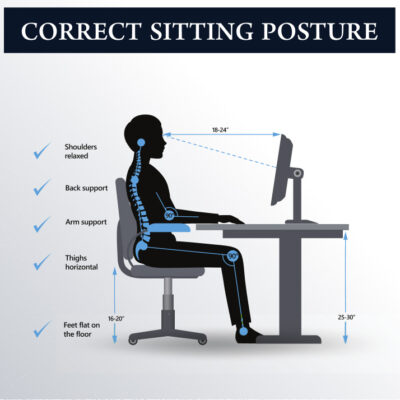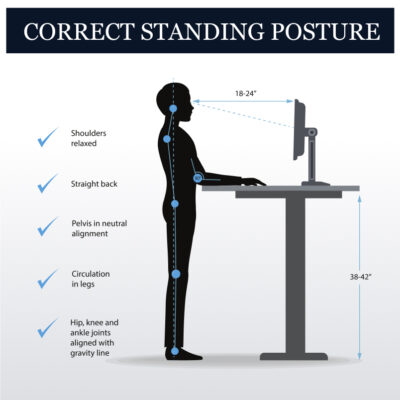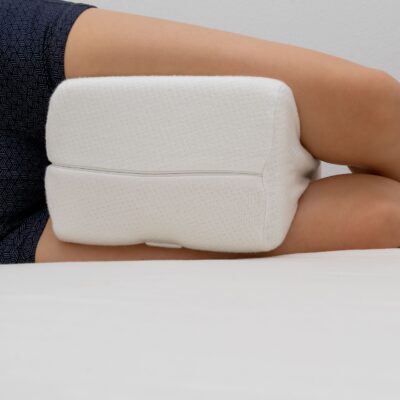Your lower back, or lumbar region, plays a crucial role in supporting your body’s weight and allowing you to move freely. Unfortunately, it’s also one of the most common areas for pain and discomfort, often due to poor posture, lack of support, or improper lifting techniques. In 2020, lower back pain affected nearly 619 million people globally. One of the key elements in preventing and alleviating back pain is proper lumbar support.
Why Lumbar Support is Important
The lumbar spine consists of five vertebrae in your lower back that support much of your body’s weight and provide flexibility for bending and twisting. However, this region is also highly susceptible to strain and injury, particularly when proper support is lacking. Inadequate lumbar support can lead to muscle fatigue, herniated discs, and chronic back pain. By taking proactive steps to support your lumbar spine, you can significantly reduce the risk of these issues and maintain better overall back health.
Daily Practices to Protect Your Back
1. Invest in a Quality Lumbar Support Cushion
One of the simplest ways to protect your lower back, especially if you spend long hours sitting, is to use a lumbar support cushion. These cushions are designed to fit the natural curve of your spine, providing the necessary support to maintain proper alignment while sitting.
- Choose the Right Cushion: Look for a cushion that provides firm yet comfortable support. Memory foam options are popular for their ability to conform to your back’s shape while providing adequate support.
- Position it Correctly: Place the cushion in the small of your back, ensuring it supports the natural inward curve of your lumbar spine.

2. Practice Proper Sitting Posture
Proper sitting posture is crucial for maintaining lumbar support and preventing back pain.
- Sit Back in Your Chair: Ensure your back is fully supported by the backrest, with your shoulders relaxed and your feet flat on the floor.
- Keep Your Hips at a 90-degree Angle: Your knees should be level with or slightly lower than your hips to reduce pressure on the lower back.
- Use Armrests: Support your arms on the armrests to reduce the strain on your shoulders and lower back.

3. Be Mindful of Your Standing Posture
Standing for extended periods can also strain your lower back if you’re not mindful of your posture.
- Distribute Your Weight Evenly: Avoid putting more weight on one leg, which can cause uneven pressure on your lumbar spine. Instead, stand with your feet shoulder-width apart and your weight evenly distributed.
- Engage Your Core Muscles: Strengthen your core by gently tightening your abdominal muscles to support your lower back.
- Shift Positions Regularly: If you must stand for long periods, shift your weight from one leg to the other or use a footrest to reduce strain.

4. Lift with Your Legs, Not Your Back
Improper lifting techniques are a common cause of lumbar injuries. Follow these tips to protect your back while lifting:
- Bend at Your Knees, Not Your Waist: Squat down by bending your knees and keeping your back straight, then lift the object by straightening your legs.
- Hold the Object Close to Your Body: Keep the object as close to your body as possible to reduce the strain on your lower back.
- Avoid Twisting Your Torso: Turn your entire body by moving your feet rather than twisting your back while carrying a heavy load.

5. Strengthen Your Core Muscles
A strong core provides essential support to your lower back and can help prevent injuries. Incorporate core-strengthening exercises into your routine, such as:
- Planks: Hold a plank position with your body in a straight line, engaging your core muscles.
- Bridges: Lie on your back with your knees bent and feet flat on the floor. Lift your hips towards the ceiling, squeezing your glutes and core.
- Dead Bugs: Lie on your back with your arms extended towards the ceiling and your knees bent at a 90-degree angle. Lower one arm and the opposite leg towards the floor while keeping your core engaged, then return to the starting position and repeat on the other side.

6. Adjust Your Sleeping Position
Your sleeping position can also affect your lumbar health. To support your lower back while sleeping:
- Sleep on Your Side: Place a pillow between your knees to keep your spine in a neutral position.
- Use a Pillow Under Your Knees: If you prefer to sleep on your back, place a pillow under your knees to reduce the strain on your lower back.
- Choose a Supportive Mattress: A medium-firm mattress that supports the natural curves of your spine is often the best choice for lumbar support.

7. Incorporate Regular Movement into Your Day
Prolonged sitting or standing can contribute to lumbar discomfort. To protect your lower back:
- Take Frequent Breaks: Get up and move around every 30 minutes to an hour to keep your muscles active and prevent stiffness.
- Stretch Regularly: Incorporate gentle stretching throughout the day to maintain flexibility and relieve tension in your lower back.

Excel Health’s Approach to Lumbar Health
At Excel Health, we understand the importance of a healthy lumbar spine in maintaining overall well-being. Our team of specialists is dedicated to providing personalized care and treatment plans to help you protect and strengthen your back. Whether you’re dealing with existing back pain or looking to prevent future issues, we’re here to guide you on your journey to a pain-free life.
Contact Us Today
If you’re experiencing lower back pain or want to learn more about maintaining lumbar health, don’t hesitate to reach out to Excel Health. Contact us today to schedule a consultation. Our expert team is ready to provide the care and support you need to keep your back healthy and strong.